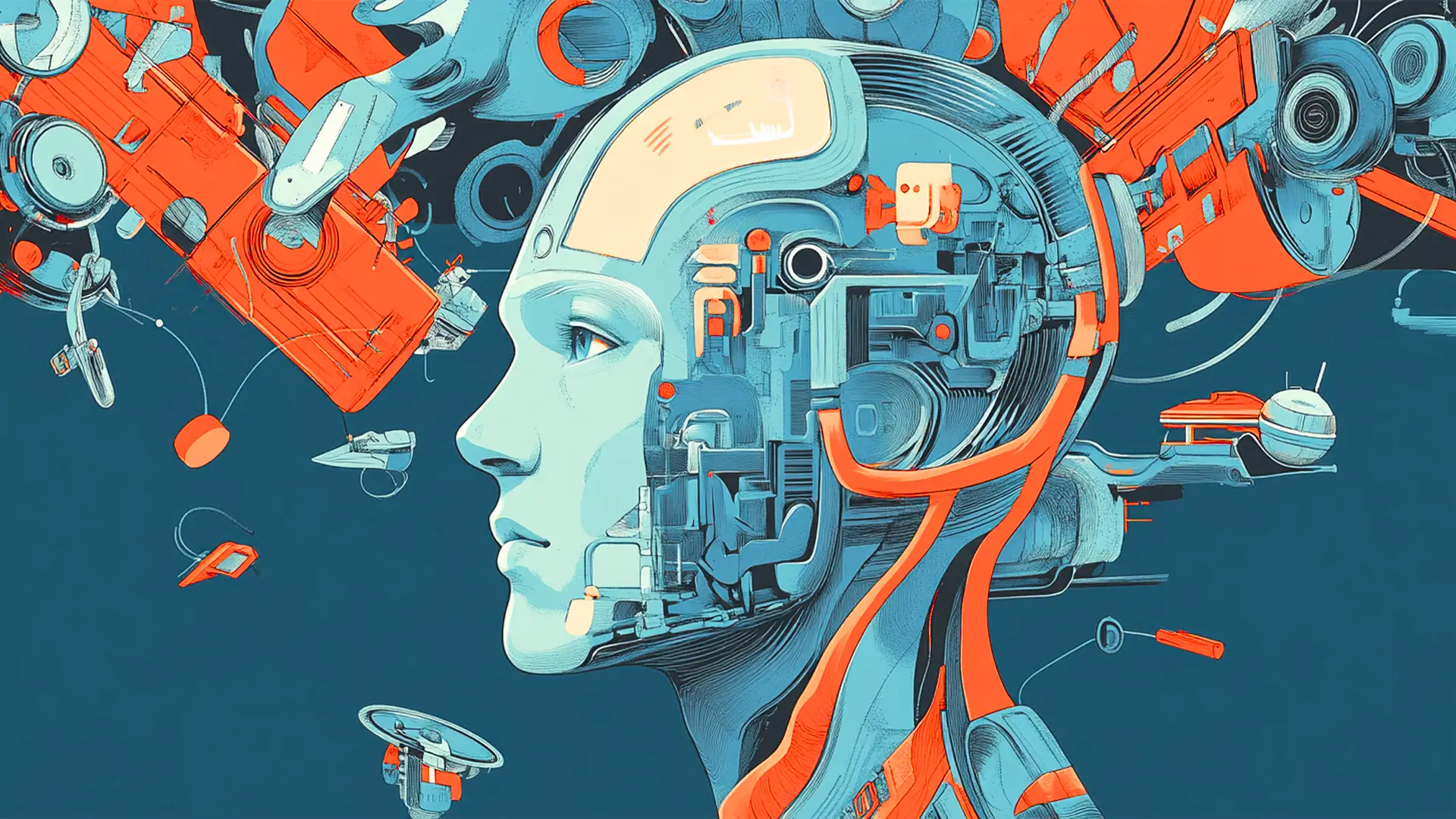Key Takeaways
- Creative leaders must bridge the gap between executive expectations and team apprehensions about AI by focusing on how AI can complement human creativity and unlock new possibilities.
- To realize AI's full potential, organizations need to invest in the necessary resources and view AI as part of a larger business strategy, not just a tool for cost savings and efficiency.
- AI can enhance creative processes by automating repetitive tasks, allowing teams to focus on strategic, high-value work that fosters innovation and creativity.
- By demonstrating AI's value and potential, creative leaders can position their teams as essential partners in driving future business success and growth.
Listen: How creative leaders can transform AI hype into high value.
While the frenzy may calm down, the conversation about AI continues, and its evolution is inevitable. Yet creative leaders are still grappling with how to integrate AI, when to do it, and how to manage teams who feel afraid of the unknowns that AI presents.
At recent InsideOut roundtables, the overall sentiment was that AI is no longer an optional curiosity. It’s a necessity for companies of any size that want to stay competitive.
But creative teams find themselves at the center of an AI conundrum:
Executives are hungry for AI-driven wins (cost savings, a PR boost, operational speed), yet rarely understand the level of investment needed to achieve such wins. Meanwhile, creative teams—though intrigued by AI’s potential—face a fear that their roles could be diminished or eliminated—maybe even at their own doing. Worse still, many in large organizations still lack access to AI tools at all.
This conundrum leaves creative leaders caught between ambitious executives and cautious teams, while trying to figure out how AI can deliver value–and provide growth opportunities for the very human talent it promises to augment.
On the bright side, the brilliant leaders in our InsideOut community unearthed useful tips on how to navigate this AI catch-22. Read on for thought-provoking insights to help your creative team move ahead.
The executive dilemma: Big AI dreams…small budget?
At our roundtables, nearly everyone mentioned that executives want AI to save them time and money, enhance operational efficiency, and generate marketing-worthy outcomes. However, most are not prepared to fully invest in the kind of AI it takes to realize these goals. The AI tools that provide security and advanced functionality tend to be expensive. And, successfully using them is far from a given. It takes dedicated human resources to not just deploy AI solutions, but to explore and iterate over time.
Leaders noted that when execs focus on AI as a means to an end, instead of part of a larger business strategy, they miss the bigger picture: AI should enhance the quality, creativity and effectiveness of work, not just speed it up. For AI to deliver, leaders must focus on value.
Show the value: Bring partners along.
To start, creative leaders should identify areas where AI can complement rather than compete with their teams’ strengths, knowing that the human touch remains integral to the creative process. In other words, don’t just look for AI to replace work. Look for AI to make room for work that wouldn’t have been possible otherwise–and show stakeholders that potential.
AI’s real promise lies in its ability to unlock new possibilities and deliver insights that humans alone cannot. For instance, a creative team can lean on AI to automate template-based tasks, then use their new-found time to dive further into brand storytelling, or explore new service offerings to enhance customer engagement.
Similarly, AI can generate data-driven, deep revelations about customer sentiment, as well as personalize marketing content. AI helps teams iterate faster, adjust in real-time, and enhance brand governance by ensuring consistency across multiple platforms. And that's what value looks like.
By helping partners talk about new value–not just savings, creative leaders position their teams as essential, future-focused partners who can wield AI as a powerful amplifier.
Show the possibilities: Bring creative teams along.
At the team level, the excitement about AI’s possibilities is often tempered by fear. The common worry is that if AI becomes too effective, a slew of creative roles could become redundant–or uninteresting. Designers worry that GenAI content could displace their work; writers fear AI-written copy will subsume human storytelling; video editors think AI will take over their craft. These concerns are valid, but it's also where creative leaders have a chance to reshape the narrative around AI.
To overcome fears of loss, leaders should show the gains and emphasize how AI can free up their teams to focus on higher-value work. By automating mundane, repetitive tasks, AI enables creative professionals to spend more time on strategy, ideation, and innovation. And everyone could use more time to think big.
By helping partners talk about new value—not just savings—creative leaders position their teams as essential, future-focused partners who can wield AI as a powerful amplifier.
Practical steps for creative leaders.
Several actionable strategies emerged from our roundtables:
- Upskill the Team: Use the time saved by AI tools for training, learning and professional development for the team. Investing in professional development shows investment in your team and helps them stay competitive and involved, reducing fears of being replaced.
- Experiment and Iterate: If you can't deploy AI for customer-facing projects, encourage your team to experiment internally with AI tools. Consider forming an internal group tasked to explore and hosting workshops to share learnings with peers, which can also speed up wider adoption. And if you can't use the tools at all, bring in others who can and have them share their stories to teach and inspire.
- Educate Stakeholders: Be proactive in educating executives and partners about what AI can and cannot do, and the level of financial investment required to do it right. Be clear about the ethical requirements and security limitations. Many stakeholders have unrealistic expectations for AI, so be ready with examples and data to prove what delivering value looks like.
Most importantly, don’t wait for a clear business strategy to bring AI to the table. Do what creative is best at: Reimagine what’s possible and lead the way into the nebulous–yet exciting future, one idea at a time.
AI success requires a partnership: “Yes, And…”
Fundamentally, AI’s role in creative work is not to replace human talent but to enhance it. Creative leaders who embrace this viewpoint will not only keep their teams relevant, but will unlock new levels of creativity and value. By focusing on the “why” behind AI implementation and uncovering what stakeholders truly value, creative leaders can strategically use AI to secure their place at the forefront of business innovation, instead of being sidelined in its wake.
As AI continues to evolve, the narrative must shift from what AI can do faster to what it can do better – and it starts with humans leading the way.
Why do we care? Our mission is to connect leaders to find solutions. If you're a senior design, experience, or creative operations leader of an in-house team at a high-profile brand and want to connect with others who share your unique challenges, let's talk. Our InsideOut community hosts small format roundtables to support the learning and growth of our members, and we’re honored to facilitate those discussions.
Latest.

Reimagining org design in the fast-paced new world of AI.
Insights from InsideOut, Leadership & Management, Content & Creative

Meet the new emerging role: AI Trainer
Career Advice, Leadership & Management, Engineering & Technology, Innovation & Emerging Tech, Talent Acquisition & Recruitment

The great AI investment paradox.
Leadership & Management, Engineering & Technology, Innovation & Emerging Tech






